Audi Q6 e-tron vs Hyundai IONIQ 5 – Differences & prices compared
Compare performance, boot space, consumption and price in one view.
Find out now: which car is the better choice for you – Audi Q6 e-tron or Hyundai IONIQ 5?
The Audi Q6 e-tron (SUV) comes with a Electric engine and Automatic transmission. In comparison, the Hyundai IONIQ 5 (SUV) features a Electric engine with Automatic transmission.
When it comes to boot capacity, the Audi Q6 e-tron offers 526 L, while the Hyundai IONIQ 5 provides 520 L – depending on how much space you need. If you’re looking for more power, decide whether the 516 HP of the Audi Q6 e-tron or the 609 HP of the Hyundai IONIQ 5 suits your needs better.
In terms of consumption, the values are 15.60 kWh per 100 km for the Audi Q6 e-tron, and 15.60 kWh for the Hyundai IONIQ 5.
Price-wise, the Audi Q6 e-tron starts at 54400 £, while the Hyundai IONIQ 5 is available from 37600 £. Compare all the details and find out which model fits your lifestyle best!
In the dynamic landscape of electric SUVs, the Audi Q6 e-tron and Hyundai IONIQ 5 stand out for their innovative designs and advanced technology. The Q6 e-tron offers a luxurious interior with cutting-edge features, appealing to those who prioritize performance and refinement. Meanwhile, the IONIQ 5 impresses with its spaciousness and fast-charging capabilities, making it a practical choice for eco-conscious drivers seeking versatility on the road.
Audi Q6 e-tron
The Audi Q6 e-tron represents a significant step forward in the realm of electric vehicles, offering a perfect blend of cutting-edge technology and timeless design. With its spacious interior and advanced infotainment system, it provides both comfort and connectivity for the modern driver. The Q6 e-tron embodies Audi's commitment to sustainability without compromising on performance or luxury.
details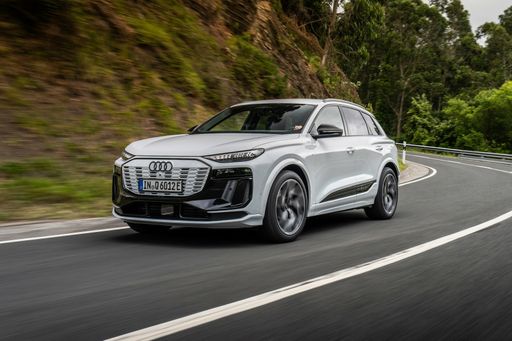 @ audi-mediacenter.com
@ audi-mediacenter.com
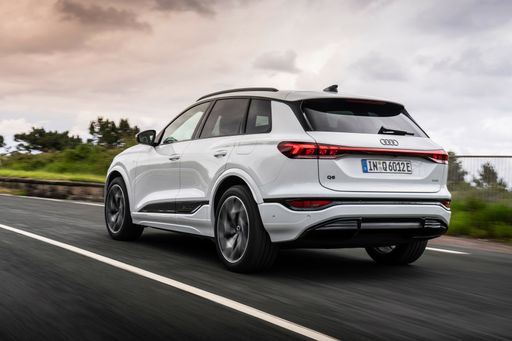 @ audi-mediacenter.com
@ audi-mediacenter.com
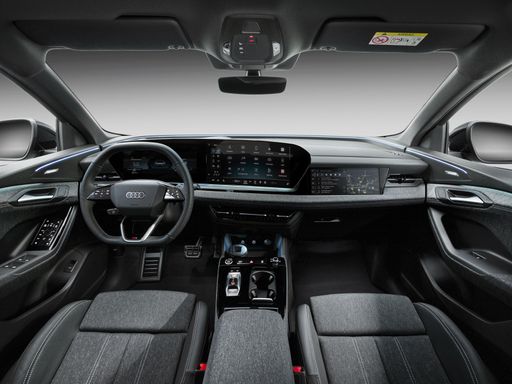 @ audi-mediacenter.com
@ audi-mediacenter.com
Hyundai IONIQ 5
The Hyundai IONIQ 5 showcases a bold and futuristic design that captures attention with its striking facade and sharp lines. This electric vehicle offers an impressive blend of performance and efficiency, making it a compelling choice for environmentally conscious drivers. Inside, the spacious and tech-forward interior provides a comfortable and engaging driving experience for both driver and passengers.
details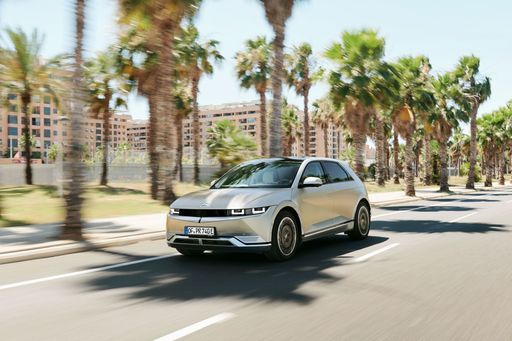 @ hyundai.news
@ hyundai.news
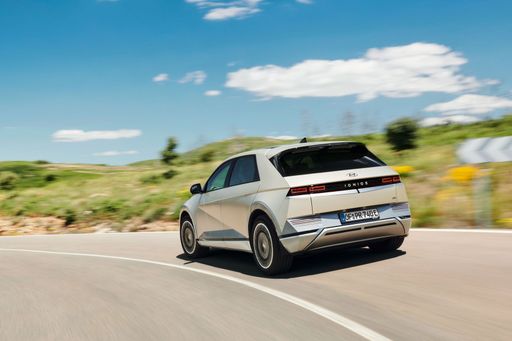 @ hyundai.news
@ hyundai.news
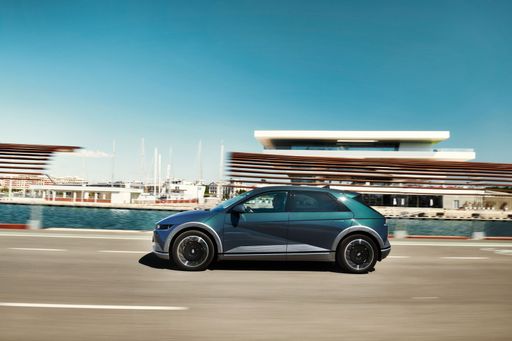 @ hyundai.news
@ hyundai.news
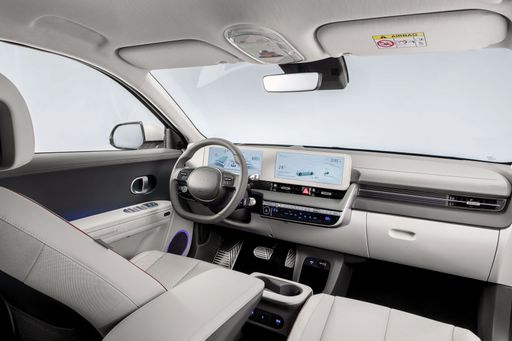 @ hyundai.news
@ hyundai.news
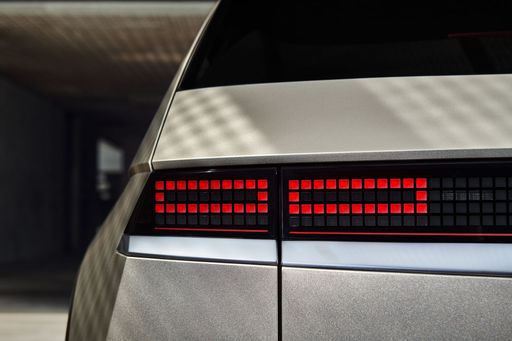 @ hyundai.news
@ hyundai.news
Audi Q6 e-tron vs. Hyundai IONIQ 5: A Comprehensive Comparison
As the automotive world shifts towards electrification, two notable contenders in the SUV segment have emerged: the Audi Q6 e-tron and the Hyundai IONIQ 5. Both vehicles offer innovative features and impressive specifications, but they cater to different consumer needs and preferences. This article delves into the technical aspects and innovations of each model, helping you decide which electric SUV fits your lifestyle better.
Performance and Powertrain
The Audi Q6 e-tron boasts multiple configurations, with power outputs ranging from 292 HP to a staggering 516 HP. It is available in both rear-wheel drive and all-wheel drive formats, delivering a range of torque values between 450 Nm and 855 Nm. In terms of acceleration, the Q6 e-tron can go from 0 to 100 km/h in as little as 4.3 seconds, making it a robust performer on the road.
On the other hand, the Hyundai IONIQ 5 also offers a range of performance options, peaking at 609 HP for top-end versions. With impressive torque values up to 740 Nm and acceleration times down to 3.5 seconds, it is clear that the IONIQ 5 is engineered for excitement. Both vehicles come equipped with automatic transmissions and reduction gearboxes for a smooth driving experience.
Electric Range and Efficiency
When it comes to electric range, the Q6 e-tron stands out with a maximum range of up to 656 km on a single charge, depending on the battery configuration. Its battery capacities are available in 75.8 kWh and 94.9 kWh options, catering to different driving needs. The energy consumption figures range from a respectable 15.6 kWh to 18.9 kWh per 100 km, positioning the Q6 e-tron as an efficient choice for long-distance travelers.
Meanwhile, the IONIQ 5 offers an electric range that varies from 440 km to 570 km, supported by its battery capacities of 63 kWh and 84 kWh. The IONIQ 5 is slightly more efficient, with consumption figures ranging from 15.6 kWh to 21.2 kWh per 100 km. This efficiency makes the IONIQ 5 a suitable option for urban commuting and short trips.
Interior and Technology
Both the Audi Q6 e-tron and Hyundai IONIQ 5 come with modern interiors loaded with advanced technology. The Q6 e-tron's interior showcases premium materials and an expansive infotainment system featuring Audi's latest MMI technology. With a trunk capacity ranging from 499 to 526 liters, it offers ample space for luggage, making it practical for family trips.
The IONIQ 5, known for its innovative design, features a spacious interior that can comfortably seat five passengers. Its minimalist dashboard is equipped with dual 12.3-inch displays for the instrument cluster and infotainment, providing an intuitive user experience. The trunk capacity is competitive, at 480 to 520 liters, offering practical versatility for everyday use.
Safety and Driver Assistance Features
Safety is paramount in both models. The Q6 e-tron comes equipped with an array of Audi's advanced driver-assistance systems (ADAS), ensuring a safe driving experience with features like adaptive cruise control, lane-keeping assist, and emergency braking.
The IONIQ 5 does not lag behind in safety features, also offering a robust suite of ADAS technologies, including forward collision avoidance, blind-spot monitoring, and highway driving assist. Both brands emphasize safety, and prospective buyers can be assured of high protection standards.
Conclusion: Choosing the Right Electric SUV
Ultimately, the choice between the Audi Q6 e-tron and the Hyundai IONIQ 5 comes down to personal preferences and priorities. The Q6 e-tron is perfect for those seeking a luxurious, high-performance SUV with an impressive electric range, while the IONIQ 5 appeals to buyers looking for a stylish, tech-savvy option that is both practical and efficient.
As the electric vehicle market continues to expand, both of these models demonstrate the significant advancements in technology and design that are reshaping the future of driving. Whether you prioritize performance, comfort, or efficiency, both the Audi Q6 e-tron and Hyundai IONIQ 5 stand out as exceptional choices in the ever-evolving landscape of electric vehicles.

|

|
|
|
|
Costs and Consumption |
|
|---|---|
|
Price
54400 - 91900 £
|
Price
37600 - 64200 £
|
|
Consumption L/100km
-
|
Consumption L/100km
-
|
|
Consumption kWh/100km
15.6 - 18.9 kWh
|
Consumption kWh/100km
15.6 - 21.2 kWh
|
|
Electric Range
482 - 656 km
|
Electric Range
440 - 570 km
|
|
Battery Capacity
75.8 - 94.9 kWh
|
Battery Capacity
63 - 84 kWh
|
|
co2
0 g/km
|
co2
0 g/km
|
|
Fuel tank capacity
-
|
Fuel tank capacity
-
|
Dimensions and Body |
|
|---|---|
|
Body Type
SUV
|
Body Type
SUV
|
|
Seats
5
|
Seats
5
|
|
Doors
5
|
Doors
5
|
|
Curb weight
2200 - 2425 kg
|
Curb weight
1955 - 2275 kg
|
|
Trunk capacity
499 - 526 L
|
Trunk capacity
480 - 520 L
|
|
Length
4771 mm
|
Length
4655 - 4715 mm
|
|
Width
1939 - 1965 mm
|
Width
1890 - 1940 mm
|
|
Height
1665 - 1685 mm
|
Height
1585 - 1605 mm
|
|
Payload
540 kg
|
Payload
385 - 530 kg
|
Engine and Performance |
|
|---|---|
|
Engine Type
Electric
|
Engine Type
Electric
|
|
Transmission
Automatic
|
Transmission
Automatic
|
|
Transmission Detail
-
|
Transmission Detail
-
|
|
Drive Type
Rear-Wheel Drive, All-Wheel Drive
|
Drive Type
Rear-Wheel Drive, All-Wheel Drive
|
|
Power HP
292 - 516 HP
|
Power HP
170 - 609 HP
|
|
Acceleration 0-100km/h
4.3 - 7 s
|
Acceleration 0-100km/h
3.5 - 8.5 s
|
|
Max Speed
210 - 230 km/h
|
Max Speed
185 - 260 km/h
|
|
Torque
450 - 855 Nm
|
Torque
350 - 740 Nm
|
|
Number of Cylinders
-
|
Number of Cylinders
-
|
|
Power kW
215 - 380 kW
|
Power kW
125 - 448 kW
|
|
Engine capacity
-
|
Engine capacity
-
|
General |
|
|---|---|
|
Model Year
2024 - 2025
|
Model Year
2024
|
|
CO2 Efficiency Class
A
|
CO2 Efficiency Class
A
|
|
Brand
Audi
|
Brand
Hyundai
|
Audi Q6 e-tron
Introducing the Audi Q6 e-tron: A Step into the Future of Electrification
The Audi Q6 e-tron marks a significant stride forward in the electric vehicle sector, cementing Audi's commitment to innovation and sustainability. This state-of-the-art SUV combines luxury, performance, and cutting-edge technology, catering to the eco-conscious driver without compromising on power or style.
Design Meets Functionality
The Audi Q6 e-tron showcases a sleek design aesthetic common in the Audi lineage. With a length of 4771 mm, it strikes an imposing presence on the road, combining practicality with sophisticated styling. It features a spacious interior that comfortably seats five and offers a generous boot capacity of 514 to 526 litres, making it perfect for both everyday commutes and longer journeys.
Advanced Powertrain Options
The Audi Q6 e-tron comes with a variety of powertrain configurations, reflecting the brand's push towards greater innovation in electric mobility. With a power range between 292 to 516 PS and a torque spread of 450 to 855 Nm, the vehicle promises an engaging driving experience. The electric drivetrain offers two modes of propulsion: rear-wheel drive for more traditional handling and all-wheel drive for enhanced traction under diverse driving conditions.
Efficiency Meets Performance
In terms of efficiency, the Audi Q6 e-tron competes strongly, leveraging advanced battery technology to deliver a range between 482 and 637 kilometres on a single charge, depending on the model. Consumption averages between 16.2 to 18.9 kWh per 100 km, showcasing Audi's commitment to minimal environmental impact. The model's CO2 efficiency class stands at A, highlighting its eco-friendly credentials.
Innovative Technology and Features
The Q6 e-tron is equipped with a host of innovative technologies that enhance both comfort and ultimate control. The vehicle is characterised by Audi’s virtual cockpit, offering intuitive infotainment controls along with a premium sound system. Safety and driver assistance systems are state-of-the-art, incorporating adaptive cruise control, lane assist, and park assist, ensuring peace of mind on every journey.
Acceleration and Speed
A performance enthusiast's dream, the Q6 e-tron accelerates from 0 to 100 km/h in an impressive 4.3 to 7 seconds, contingent on model specification. It boasts a top speed of 210 to 230 km/h, providing the thrilling dynamics typical of Audi's high-performance vehicles.
Electric Vehicle Infrastructure
With varying battery capacities from 75.8 to 94.9 kWh, the Q6 e-tron supports fast charging, making long-distance journeys more feasible than ever before. The advanced energy recuperation system further enhances battery efficiency, maximising range and reducing charging downtime.
A Cost-Effective Investment
The Audi Q6 e-tron presents not just a vehicle but a viable economic investment over the long haul. With a cost structure that spans €63,500 to €104,800, along with monthly running costs ranging from €1,426 to €2,038, it balances premium quality with a sustainable economic footprint.
Conclusion: A New Era of Driving
The Audi Q6 e-tron represents a new chapter in the evolution of electric SUVs, marrying performance with sustainability. As the industry moves toward a greener future, Audi drives forward with innovative design and groundbreaking technology, ensuring that the Q6 e-tron is not just a vehicle but a visionary statement for the future.
Hyundai IONIQ 5
Introducing the Hyundai IONIQ 5: A New Era in Electric Mobility
The Hyundai IONIQ 5 is a revolutionary addition to the electric car market, blending futurist aesthetics with ingenious technological features. As part of Hyundai's all-electric lineup, the IONIQ 5 exudes a refreshing approach to sustainable motoring, offering a blend of power, efficiency, and innovation that is set to transform everyday driving.
A Futuristic Design
The IONIQ 5 sets new standards in automotive design with its distinctive silhouette. Its clamshell bonnet and pixelated LED light design form a unique visual signature, evoking a sense of modernity and advancement. Built on Hyundai's Electric-Global Modular Platform (E-GMP), this SUV heralds a new direction for electric vehicles, serving both form and function with a flat floor that maximises interior space.
Performance and Efficiency
The Hyundai IONIQ 5 offers a variety of powertrains to cater to different driving preferences. Depending on the model, power output ranges from 170 PS to a staggering 609 PS, with corresponding torque between 350 Nm and 740 Nm. These configurations enable a brisk acceleration capability, reaching 0-100 km/h in as little as 3.5 seconds.
The car’s battery options of 63 kWh and 84 kWh provide flexibility between range and performance. The efficiency of the IONIQ 5 is admirable, with a consumption ranging from 15.6 to 21.2 kWh/100km, ensuring the capability to travel up to 570 km on a single charge.
Innovative Technology
The IONIQ 5 isn't just about efficient propulsion; it's laden with cutting-edge technology that enhances the driving experience. The vehicle includes an ultra-fast charging capability, able to reclaim 80% of the battery life within just 18 minutes. This is complemented by Vehicle-to-Load (V2L) technology, which turns the IONIQ 5 into a power source to charge devices or even other electric vehicles.
Comfort and Convenience
Inside, the IONIQ 5 continues to impress with a spacious and flexible cabin that maximises comfort and utility. Its minimalist dashboard, dual 12.3-inch screens for infotainment and digital instrument cluster, and extensive use of eco-friendly materials contribute to a serene driving environment.
Safety Meets Innovation
Hyundai has equipped the IONIQ 5 with an array of advanced driver assistance systems. These include features such as Smart Cruise Control, Highway Driving Assist, and Remote Smart Parking Assist, ensuring that safety is paramount without sacrificing convenience.
The Future of Sustainable Driving
With a CO2 efficiency class of A and zero emissions, the Hyundai IONIQ 5 signifies a shift towards more sustainable driving practices. Its blend of technology, performance, and aesthetic appeal positions it as a pivotal player in the electric vehicle market, paving the way for a cleaner, greener future in automotive design.
Which drive types are available for the Audi Q6 e-tron?
Available as Rear-Wheel Drive or All-Wheel Drive.
The prices and data displayed are estimates based on German list prices and may vary by country. This information is not legally binding.
